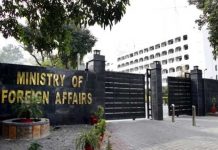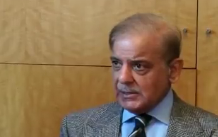Registering a substantial 1.9 percent growth rate, the country’s population has bulged to around 220.9 million people exerting tremendous pressure on its resources with no exception to the housing sector – an area indispensable for life of all and sundry.
Ranked 14th populous country of the world in 1950, Pakistan stands the 5th most populous country now following China, India, USA and Indonesia owing to rapid increase in its population to 220.9 million people in 2021 against 33 million in 1950, resulting a significant shortfall in housing units in the country including Khyber Pakhtunkhwa.
The 6th national population and housing census 2017 had revealed a substantial increase of 77.774 million population with a staggering growth rate of 2.4 percent against 130 million people in the 1998 housing and population census during 1998-2020.
The country’s predominant population of around 132.189 million (63.6pc) are living in rural areas in 2017 against 65.6percent in 1998, registering a two percent increase in migration of people from rural to urban areas for search of quality education, healthcare services, employment and other socioeconomic facilities. Urban population stands at 75.58 million that is about 36.4pc of the country’s population in 2017 against 32.52pc in 1998, showing an upward increase of 3.88percent, resulting hike in properties’ prices and houses’ rent in Peshawar. A residential 10 marla plot at Regi Model Town, Peshawar is being sold from Rs 12 million to Rs13 million while a five marla two storey house at Hayatabad is rented on Rs 60,000 to Rs 70,000. “I have been living in a rented portion of a house in Hayatabad for the last 12 years and is currently paying Rs 30,000 per month from my hard earned salary,” said Nasir Khan, a resident of Mardan.
“The construction of a house is still merely a dream for many poor people due to shooting prices of land, construction materials including cement, steel bars and bricks,” Nasir Khan said, adding homeless people have pinned high hopes from Naya Pakistan Housing Program (NPHP). He said there was a need to expedite work on NPHP projects so that price-hike stricken people could become owners of houses. Muhammad Waqas Anjum, Assistant Director, Provincial Housing Authority (PHA), told APP that Pakistan was facing a shortfall of around 10 million houses including 2.5 million in Khyber Pakhtunkhwa.
Referring to NPHP’s housing survey, he said five million houses of 5 marla were required in Pakistan and 7,50,000 in Khyber Pakhtunkhwa, adding 2,62,500 kanal land was needed for construction of these housing units. He said 104, 897 houses were required in Peshawar, 58,309 houses in Mardan, 65,749 in Swat, 39,981 in DI Khan, 39,919 in Swabi, 39,712 in Charsadda, 38,244 in Mansehra, 37, 313 in Nowshera, 35, 282 in Lower Dir, 32,751 in Abbottabad, 28,697 in Bannu, 24,646 in Haripur, 24,421 in Kohat, 23,255 in Upper Dir, 20,048 in Buner, 21,529 in Lakki Marwat, 19,281 in Kohistan, 18620 in Shangla, 17,699 in Malakand, 17,355 in Karak, 17,748 in Hangu, 11,711 in Batagram, 10,992 in Chitral, 9,629 in Tank and 4,211 in Torghar. Waqas said only 6,500 kanals land was available in Peshawar, 560 kanal in Swat, 377 kanal in Charsadda, 300 kanal and 8,300 land in Hangu for construction of houses. “The current demand for new housing units is growing at the rate of six lac houses per year and if we add five lakh more houses than 1.1 million units per annum would be required to clear the existing backlog of 10 million houses in next 20 years.”
To address shortage of houses in KP, he said about 15 housing projects were initiated by the KP Government in the province. Work on Hangu township on 8,400 kanal was launched to construct 10,500 housing units with an estimated cost of Rs10 billion in next three to five years. “We are going to launch three high rise buildings at Nishtarabad, Warsak-I and Warsak-II in Peshawar where 900 residential flats would be constructed,” he said, adding consultants were hired for Warsak-I covering 4.14 kanal and Warsak-II of 3.8 kanal costing Rs3,500 million.












